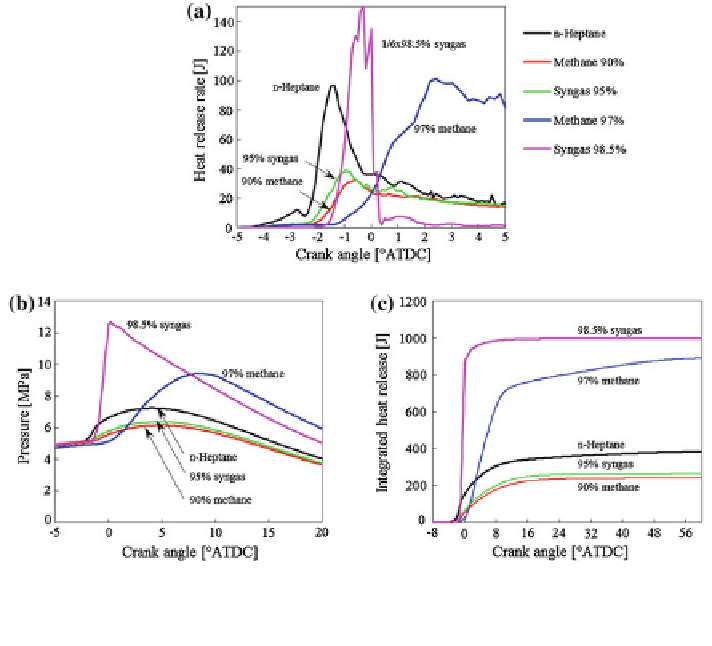Environmental Engineering Reference
In-Depth Information
Fig. 18 Heat release rate (a), pressure (b), and IHR (c) profiles with respect to crank angle for the
single fuel (n-heptane), and 90 and 97 % methane dual-fuel, and 95 and 98.5 % syngas dual-fuel
cases
Results for the syngas dual-fuel cases are shown in Fig.
18
, which plots the
HRR, pressure, and IHR pro
les for all the
ve cases. The HRR and pressure
pro
les for the low-load cases (90 % methane and 95 % syngas) indicate more rapid
combustion and higher heat release for 95 % syngas compared to that for 90 %
methane. Consequently, as indicated in Table
3
, IMEP and engine ef
ciency are
higher for 95 % syngas compared to those for 90 % methane. Differences between
the syngas and methane become signi
cantly more pronounced at high-load con-
dition (97 % methane and 98.5 % syngas). The HRR and pressure pro
les for
syngas indicate nearly spontaneous combustion with a very sharp rise in heat
release and pressure but a gradual combustion process for methane. The total heat
release is also noticeably higher for syngas compared to that for methane. These
differences are primarily due to the much faster
flame propagation in syngas-air
mixture compared to that in methane-air mixture, even though the equivalence
ratios for the two mixtures are nearly the same (Table
3
).
The
fl
flame propagation behavior is illustrated in Fig.
19
, which presents the HO
2
contours for the 95 and 98.5 % syngas cases. Similar to the methane case, the
contour plots are cut through the peak
fl
value location. As expected, the plots
ϕ

Search WWH ::

Custom Search